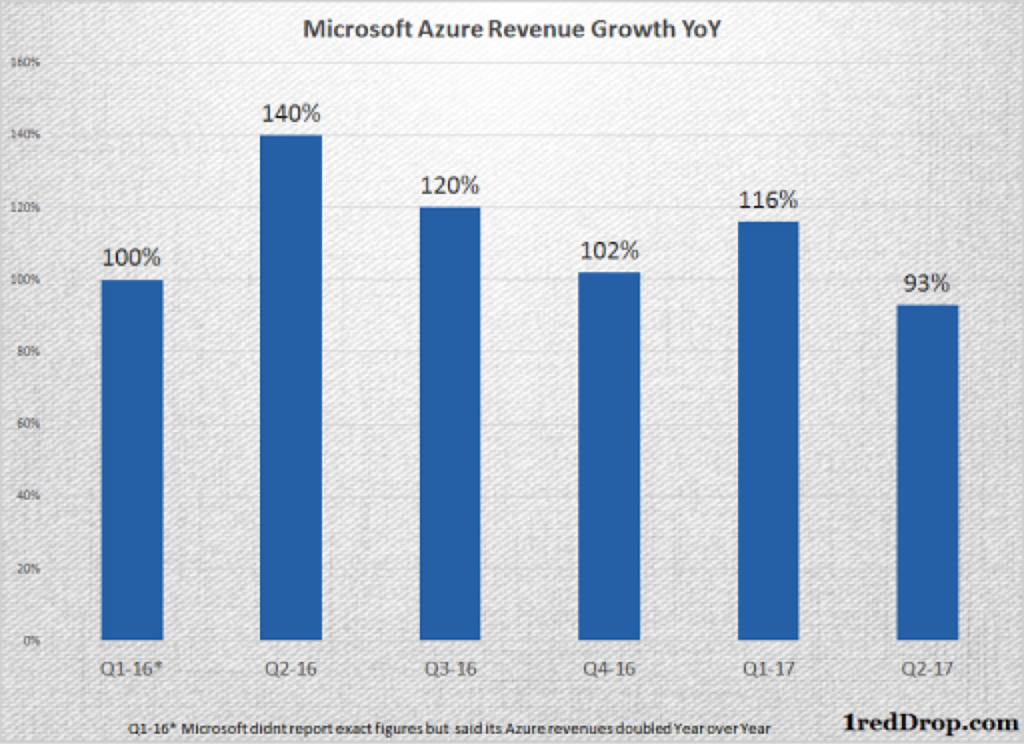According to a recent report by a JPMorgan analyst, Microsoft’s Infrastructure as a Service platform, Microsoft Azure, recorded $2.7 billion in revenues in 2016.
We don’t really know how close that number is to the real one, but any way you look at it Azure still has plenty of distance to cover before getting close to Amazon Web Services.
Microsoft does not give us a breakdown of its cloud revenues, but we know that it is more of a horizontal cloud player with products covering the entire spectrum of SaaS to IaaS. The Redmond giant gives their commercialized cloud annual run rate each quarter, which includes revenues from Office 365, Dynamics, Azure and other cloud-related services.
On the segment reporting front, cloud products are spread across two segments: Office Productivity and Business Processes, and Intelligent Cloud. You can say they haven’t made it easy for anyone to drill down to individual product revenue numbers.
Microsoft’s commercialized cloud annual run rate exceeded $14 billion during the recent quarter, which means they made $1.16 billion during the last month of the quarter. It’s safe to assume that their quarterly revenues are at or around $3.5 billion.
This revenue now includes all cloud products, from Office 365 to Microsoft Azure. Amazon Web Services is a hardcore Infrastructure as a Service player, and their revenue during the most recent quarter was $3.56 billion.
Office 365 has been on a roll in the last several quarters, growing at an above-50% rate. However, since SaaS brings in a lot of revenue, we can conclude that Azure revenues are much smaller than those of AWS.
So, it’s not surprising that Microsoft Azure has been able to clock triple-digit growth almost consistently since the first quarter of 2016.

If we were to assume the $2.7 billion figure from JPMorgan to be true, then even if Microsoft Azure continues to grow at the current speed, nearly doubling its revenue every quarter, it would still take them more than two years to catch up with Amazon Web Service’s 2016 revenues of $12.22 billion.
Moreover, by that time Amazon will have moved the hoop to some other stadium, because they are still growing at strong double digit rates themselves.
It’s clear that Azure’s revenues are still far away from those of AWS, which is probably why Microsoft has only been reporting year-over-year growth until now.
Thanks for reading our work! We invite you to check out our Essentials of Cloud Computing page, which covers the basics of cloud computing, its components, various deployment models, historical, current and forecast data for the cloud computing industry, and even a glossary of cloud computing terms.



